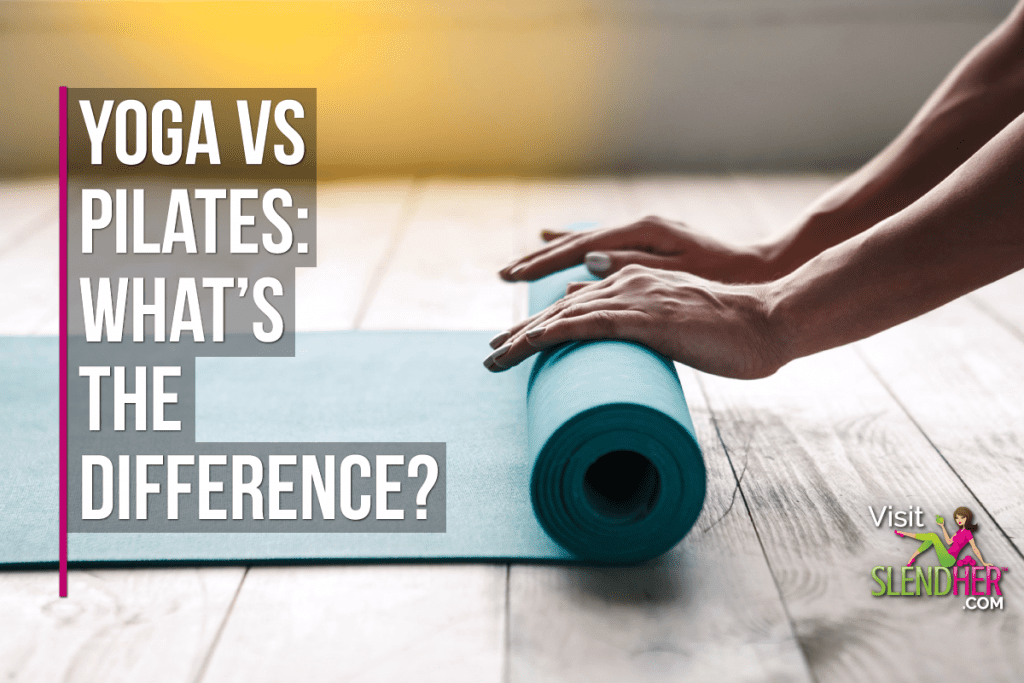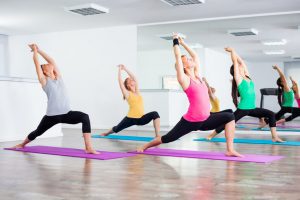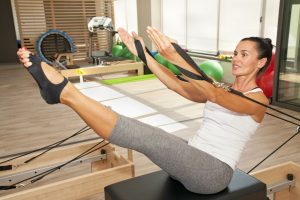
If yoga and Pilates were people, some might question if they were related. From a distance, they look similar, act similar, and produce similar results, but there’s a lot more that sets each of these mind-body fitness styles apart than can liken them to twinning. Let’s dig into some of the high-level differences between yoga and Pilates.
Yoga vs Pilates: History
When it comes to age, yoga is by far much older than Pilates. Yoga is said to date back an estimated 5,000 years when it originated in India. By comparison, Pilates is much younger, having been created in the 1920s by physical trainer Joseph Pilates (1880-1967). When developed, yoga was focused on improving not only physical health but also emotional and spiritual health (though many practices today are less weighted in or completely devoid of the spiritual). Pilates, however, was developed with the intention of physical rehabilitation that proved useful to soldiers returning from World War I. While many assume Pilates was inspired by yoga poses to create his exercises, there doesn’t seem to be direct evidence to back this up.
Yoga vs Pilates: Movement

Both yoga and Pilates can leave you feeling refreshed physically and mentally, while simultaneously stretching, strengthening, and toning muscles. But how those results come about are not the same.
Yoga in its most basic form is practiced using poses which are typically held for a number of breaths. On the flip side, Pilates is more about movement, with exercises being active instead of static. Both mind-body fitness styles work head to toe, but Pilates tends to be more centralized on the core, including sideline exercises to develop the obliques, abs, and back muscles.
The difference in movement also means that the duration of a session is different. Yoga, being more slow and controlled, tends to take longer than a Pilates class which is meant to be shorter but still effective.
Yoga vs Pilates: Breath
Hand in hand in with movement is breath work. Yoga and Pilates both emphasize the importance of breathing in each practice. With yoga, the breath tends to be in and out through the nose while breathing through the belly. (Though note, some yoga styles integrate different breathing techniques. However, for the sake of this high-level look, we are focusing on the most common breath work used in yoga). In Pilates, the breath is through the nose and out through the mouth, with the goal of creating lateral breathing–essentially pushing your rib cage open to the sides with the inhale and closing in toward the core with the exhale.
Yoga vs Pilates: Equipment

The good news is you can wear the same exact clothing for both yoga and Pilates. But when it comes to equipment, your props will need a swap–and starts with the mat. From a distance they might look the same, but the mats used in each practice are unique. With yoga, the mat is thinner and non-slip to allow for better balance and control in poses. With Pilates, the mat is thicker and squishier to create more padding for movements such as rolling along the spine.
While a mat is really all you need to do yoga or Pilates, other props and even equipment can help to elevate your practice. Props in yoga, including straps, blocks, bolsters, and blankets, are typically used to help support the body during yoga poses. For example, if you’re not very flexible in your hips or upper legs, sitting on a block might create a more effective position for your body than would sitting directly on the floor.
In Pilates, many of the props, including bands, rings, balls, and hand weights, are used more to create resistance. And when props aren’t enough, Pilates takes it to a whole new level with equipment training using an apparatus called the Reformer. With mat work, resistance is only provided by body weight, gravity, and props, whereas on a Reformer, you have more options for creating and increasing resistance.
Yoga vs Pilates: Aftermath
Any kind of exercise you do has a way of transforming how you feel when comparing before and after. But when it comes to the transformation itself, it might look a little different between yoga and Pilates. With yoga, unless you’re practicing a high-paced flow yoga such as Vinyasa or a hybrid mix of yoga and cardio, you’re most likely to leave the mat feeling calm, at peace, and more mindful of the present moment. However, when you wrap up a Pilates class, you’re likely to feel more energized and uplifted courtesy of the active-based movements.
Whatever way you feel when the work is done, you can rest easy knowing both mind-body fitness styles serve as a benefit to your body. Burning fat, building strength, and maximizing mobility are all possible with both yoga and Pilates. To find out which one you like best, give them a try. Even better? You don’t have to choose one over the other. Build yoga AND Pilates into your workout routine and you’ll reap more rewards because of their unique differences.
Do you have a preference between yoga and Pilates? Share your opinions of each in the comments!

Leave a Reply